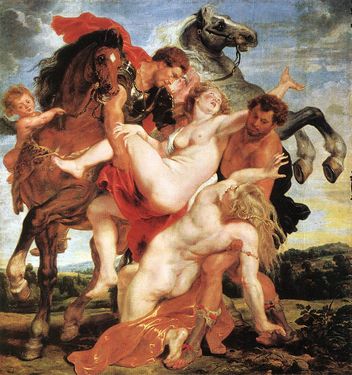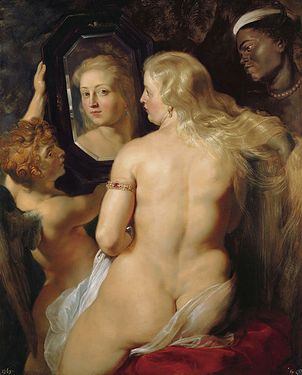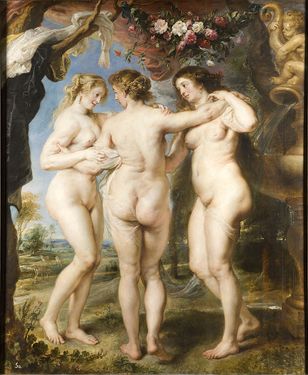Rubenesque: Difference between revisions
Jump to navigation
Jump to search

Jump to: Main Page • Micropedia • Macropedia • Icons • Time Line • History • Life Lessons • Links • Help
Chat rooms • What links here • Copyright info • Contact information • Category:Root
(Created page with "{{Header|Rubenesque 04/20}}{{Page-ok|04/20}} Sir Peter Paul Rubens (1577-1640) was a prolific 17th century Flemish painter whose name entered the lexicon thanks to the fu...") |
No edit summary |
||
| (2 intermediate revisions by the same user not shown) | |||
| Line 1: | Line 1: | ||
{{Header|Rubenesque | {{Header|Rubenesque 04/20}} | ||
[[Sir Peter Paul Rubens]] (1577-1640) was a prolific 17th century Flemish painter whose name entered the lexicon thanks to the full-bodied women he depicted. "The Three Graces" (1636-1638) illustrates as well as any of the artist's works the adjective Rubenesque. Time Magazine art critic Richard Lacayo said contemporary audiences associated the abundance found in Rubens' figures with "power, with happiness, with pleasure." | [[Sir Peter Paul Rubens]] (1577-1640) was a prolific [[17th century]] Flemish painter whose name entered the lexicon thanks to the full-bodied women he depicted. "The Three Graces" (1636-1638) illustrates as well as any of the artist's works the adjective Rubenesque. Time Magazine art critic Richard Lacayo said contemporary audiences associated the abundance found in Rubens' figures with "power, with happiness, with pleasure." | ||
<gallery mode="packed" heights="250px" caption="Paintings by Sir Peter Paul Rubens" > | <gallery mode="packed" heights="250px" caption="Paintings by Sir Peter Paul Rubens" > | ||
| Line 11: | Line 11: | ||
The term has several near-synonyms with varying shades of meaning: Full-figured or Rubenesque - the latter term referring to the art of [[Peter Paul Rubens]], best known for portraying full-bodied women. Voluptuous and zaftig usually connote ripeness, sensuality, and a body shape involving large breasts and wide hips. | The term has several near-synonyms with varying shades of meaning: Full-figured or Rubenesque - the latter term referring to the art of [[Peter Paul Rubens]], best known for portraying full-bodied women. Voluptuous and zaftig usually connote ripeness, sensuality, and a body shape involving large breasts and wide hips. | ||
{{ | {{sa-bbw}} | ||
{{Footer}} | {{Footer}} | ||
Latest revision as of 22:15, 25 February 2022
Sir Peter Paul Rubens (1577-1640) was a prolific 17th century Flemish painter whose name entered the lexicon thanks to the full-bodied women he depicted. "The Three Graces" (1636-1638) illustrates as well as any of the artist's works the adjective Rubenesque. Time Magazine art critic Richard Lacayo said contemporary audiences associated the abundance found in Rubens' figures with "power, with happiness, with pleasure."
- Paintings by Sir Peter Paul Rubens
The term has several near-synonyms with varying shades of meaning: Full-figured or Rubenesque - the latter term referring to the art of Peter Paul Rubens, best known for portraying full-bodied women. Voluptuous and zaftig usually connote ripeness, sensuality, and a body shape involving large breasts and wide hips.
See also
Chat rooms • What links here • Copyright info • Contact information • Category:Root


